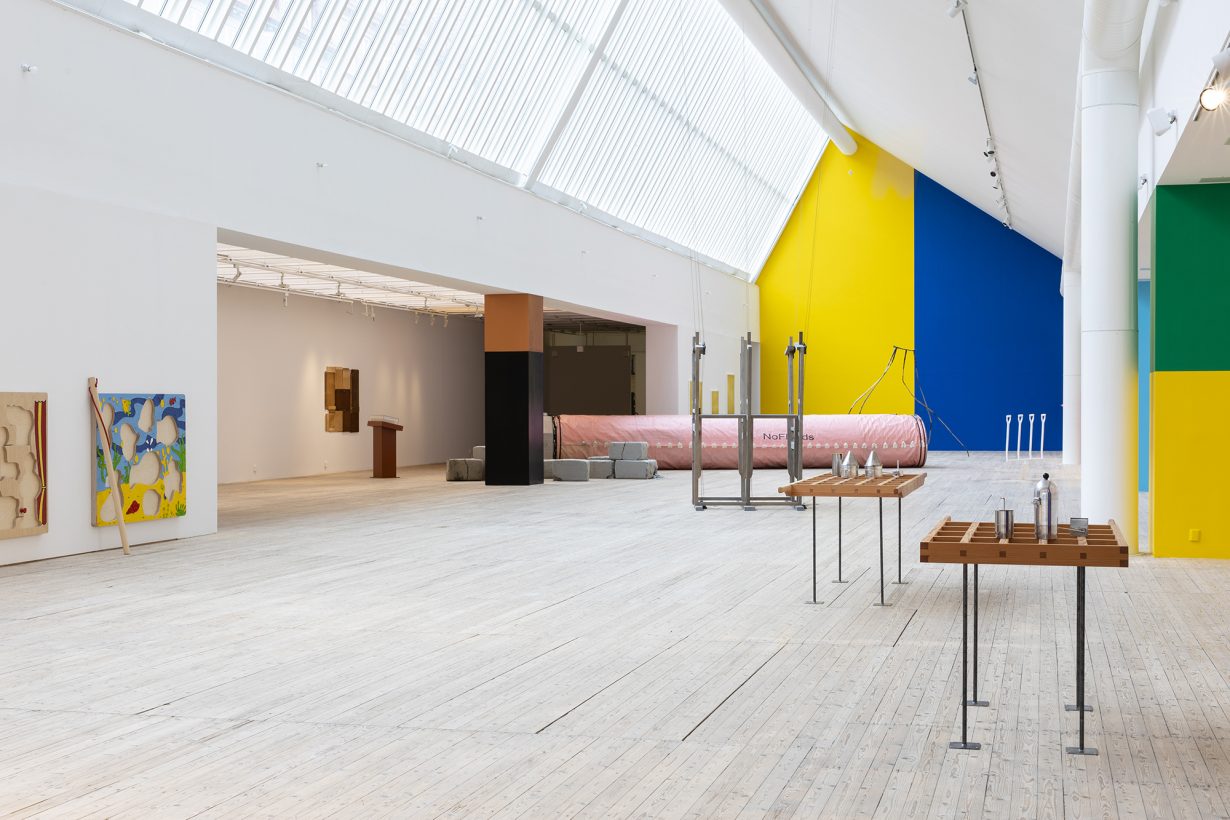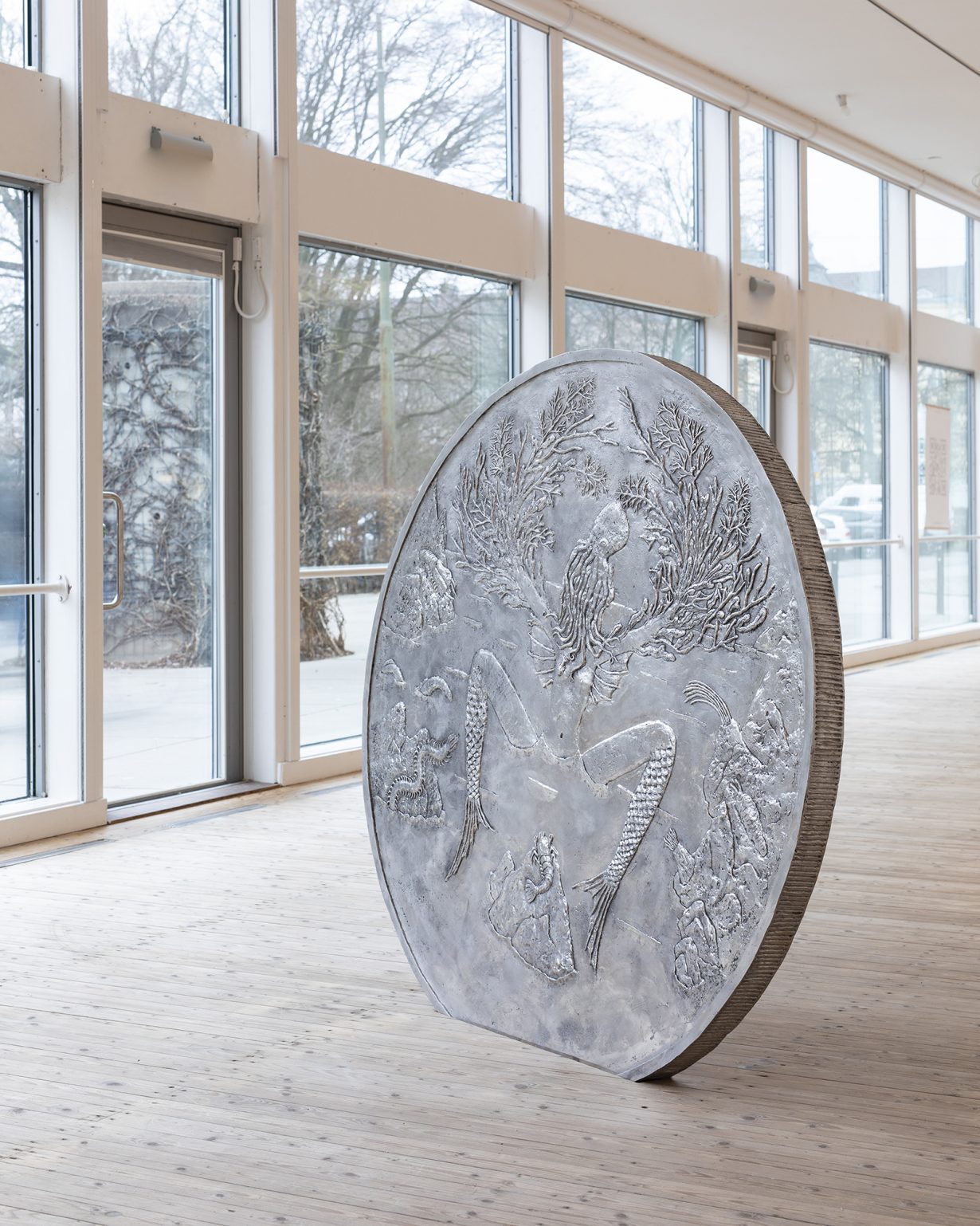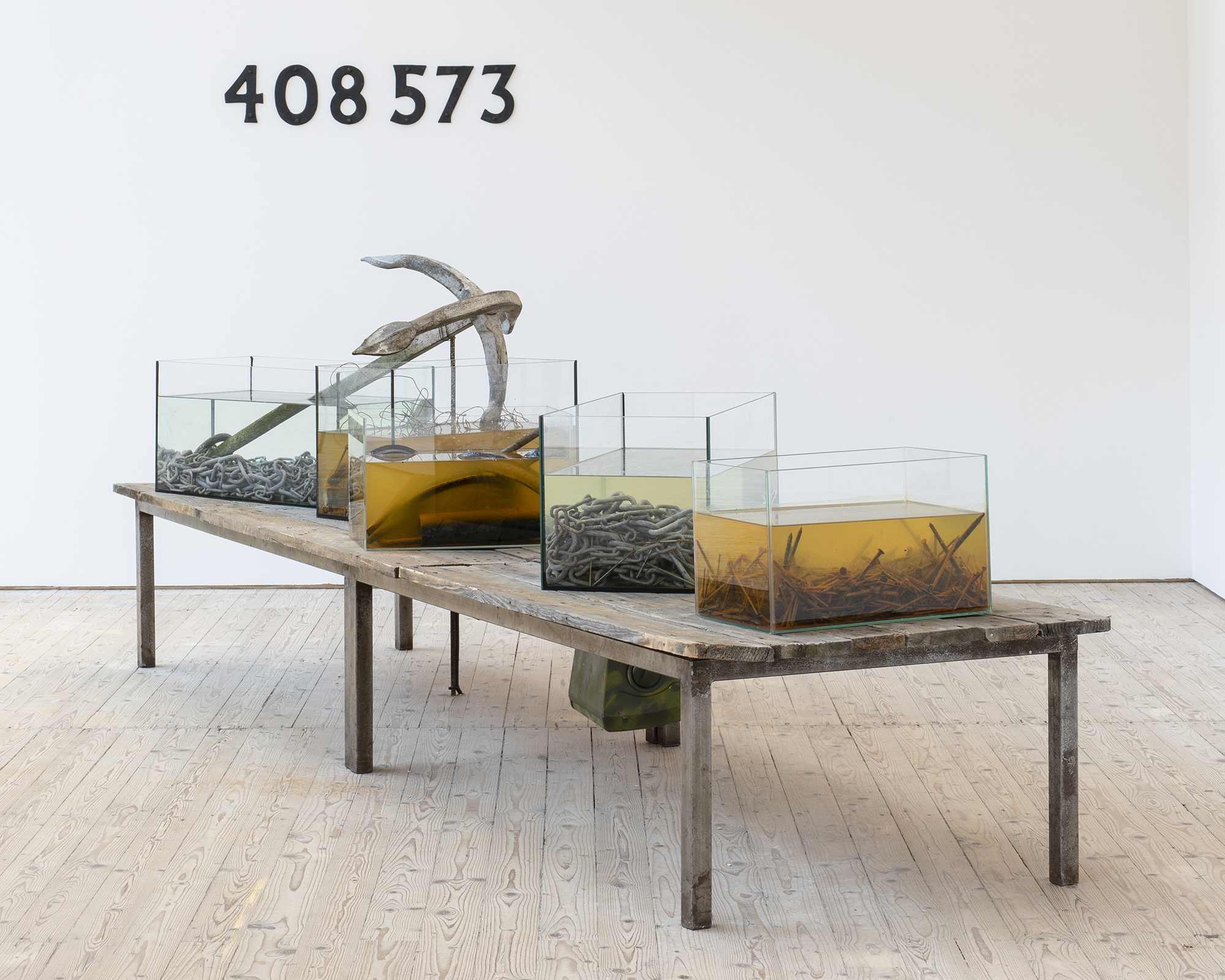Drain the Öresund at Malmö Konsthall imagines a united community through Malmö and Copenhagen’s contemporary art scenes
In 1953 the Swedish industrialist Ruben Rausing had a grand idea – drain the Öresund Strait (otherwise known as the Sound) and create a land border between Malmö in Sweden and Copenhagen in Denmark. In an opinion piece for the newspaper Dagens Nyheter, the milk carton tycoon argued the new territory would mean more space and more profits for the Danes and Swedes (as well as being no bad thing for his own company, Tetra Pak). But the opinion was met with scorn. Today, it’s the extraordinary cable-stayed Öresund Bridge that connects the two cities.
Taking Rausing’s madcap plan as the starting point, the Poland-based, US-born curator Post Brothers offers a snapshot of the region’s contemporary art scene, gathering 14 artists, both emerging and established, from both sides of the bridge. But the project is conceptually weighty too, covering all manner of issues – historical, social, environmental, political.
Industrial materials and infrastructures that have plundered resources from the Öresund Region and fashioned Swedish and Danish economies are the thematic anchors. There are several references to the human cultivation of the Sound, such as Ina Nian’s glass cases of seawater, filled with corrodible iron chains and tools (Black Noise #4, 2021–). Nian juxtaposes these objects with the sounds of ore production, sailing ships and fighter planes, interweaving iron’s historic role in colonialism and slavery, as well as modern warfare. Close by, Nian has placed the number ‘408,573’ on the wall in a confronting reference to the number of tons of iron apparently exported from Sweden to Britain between 1600 and 1815.

The exhibition excavates other uncomfortable moments of culpability, as with Kalle Brolin’s video installation I am Come Again (2022). Here, archival and contemporary imagery highlights a complex relationship with immigration, addressing who, historically, has been permitted to work in Sweden’s agriculture. Notably, among those welcomed as seasonal labourers after the Second World War were able-bodied survivors of concentration camps, at a time when some Nazis criminals were conversely being sheltered in Scanian castles.
Hanni Kamaly’s three arachnoid steel sculptures, towering nearly three metres high, give voice to a silenced community of migrants. They are titled after individuals deported from Sweden during the early 1900s, whose photographs Kamaly discovered in the book Swedish Racial Types by eugenicist Herman Lundborg: GEORGE CAMERBACH (2022–25), JUAN SALAZAR (2022–25) and ALI BEN MOHAMMED (2024–25). Even without knowing these names, though, Kamaly’s sculptures exude bodily presence.
Andreas Rønholt Schmidt and Sebastian Hedevang’s geometric frames, which reimagine the historic moulds used to make ‘sludge cakes’ from human waste before the modern sewer system arrived during the 1850s, are another marvellously corporeal addition. Added items of modernist kitchenware, like a gleaming coffee pot, transform these frames into slightly farcical pieces of new cool Scandinavian design. Once the tools of the lowly ‘kjeltringer’ (nightmen), these frames are now symbols of contemporary coffee culture and the middle classes.

There are several blink-and-you’ll-miss-it moments, like Henriette Heise’s delicate geometric line drawings, discreetly positioned on the walls (Day Sky, 2017–25). Flares of colour painted by Hannibal Andersen over particular walls and columns, meanwhile, familiar but not immediately identifiable, turn out to be the coopted palettes of big Scandi business like Ikea, Husqvarna and Mærsk, speaking to the quiet influence of capitalist forces (The Abstract Expression of Privatization [Six Colour Mark], 2022–25). (Arguably, though, the strength of this idea is diluted by the inclusion of non-Scandi business like Red Bull, Duracell and BP.) In keeping with a currently popular curatorial trend, the nonhuman population of the Öresund Region has a voice here too. Silas Inoue’s enormous stainless steel and aluminium coin, Bond (2023), features a part-animal, part-plant, part-human creature on one side and a moth on the other. The title suggests the underlying ties between human and nonhuman beings as well as financial debt and the price paid by nature for human expansion.
The most visually striking work, physically dominating the gallery, is Jessica Olausson’s A Room Used to Gather (2025), although on encountering it one may wonder what a cabinet, flood defence barriers, an electronic votive candle stand, lumps of ash and the coordinates to an aeroplane graveyard (provided on the wall label) have in common. Apparently they all relate to damage control. The imposing presence of the flood barriers, in particular, conjures what might have happened if Rausing had had his megalomaniacal way and the waters of the Sound had been drained. This work might stand, in a way, for the whole show’s reckoning with the Öresund Region and its tale of two cities – a little obscure at times, unless you’re prepared to do some conceptual digging, but undeniably ambitious.
Drain the Öresund at Malmö Konsthall, through 4 May
From the April 2025 issue of ArtReview – get your copy.
